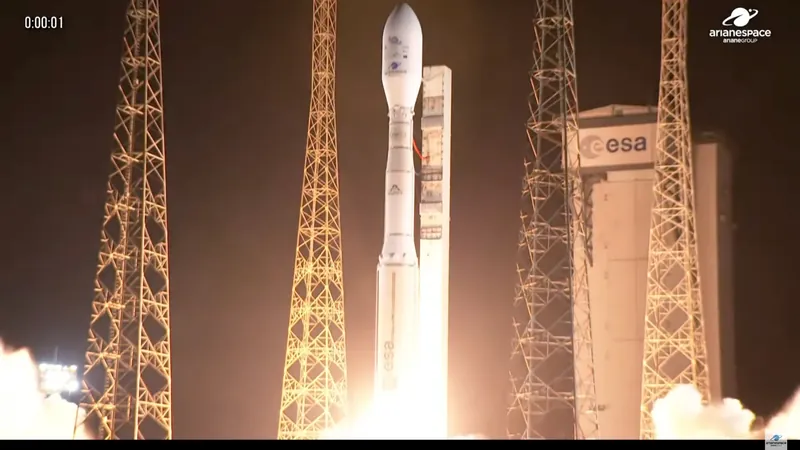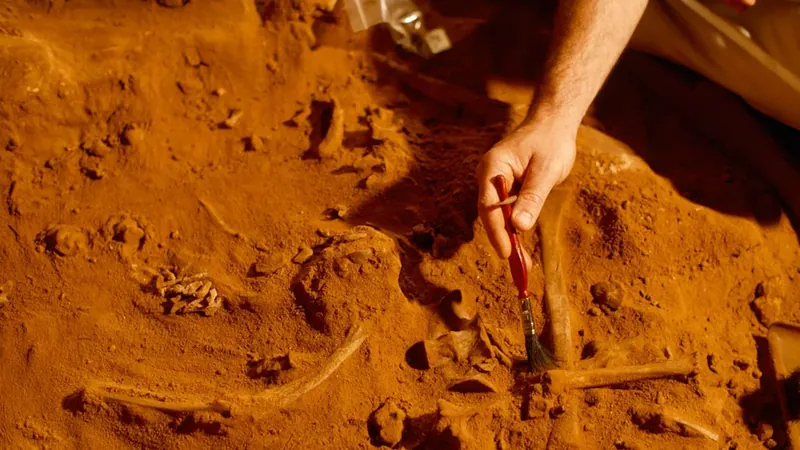
Soaring to New Heights: Vega C Rocket Successfully Launches Groundbreaking CO2 Mapping Satellite and Four Earth-Observation Spacecraft!
2025-07-26
Author: Ming
Rocket Launches into the Night Sky
In a dazzling display of technological prowess, the Vega C rocket blasted off from Europe’s Spaceport in Kourou, French Guiana, on July 25 at 10:03 p.m. EDT. This mission, designated VV27, not only marks another milestone for the French aerospace company Arianespace, but it also pushes the boundaries of our understanding of carbon emissions and Earth observation.
Mission Highlights: MicroCarb and the CO3D Constellation
This impressive launch carried five satellites into space, headlined by MicroCarb, a cutting-edge satellite developed by the French space agency CNES. Weighing in at 400 pounds (180 kilograms), MicroCarb is on a mission to map the sources and sinks of carbon dioxide, the most critical greenhouse gas, with unparalleled accuracy—capable of detecting CO2 concentrations to within just one part per million!
Operating at an altitude of 404 miles (650 kilometers) in a sun-synchronous orbit, MicroCarb dares to dream big. If all goes to plan, this satellite will gather vital data for a minimum of five years, equipping scientists with insights vital for combating climate change.
Meet the CO3D Satellites: 3D Mapping for a Better Tomorrow
Alongside MicroCarb, the mission featured four additional satellites that form part of the innovative CO3D ("Constellation Optique en 3D") Earth-observing network. Each of these satellites weighs approximately 550 pounds (250 kg) and will operate in a similar sun-synchronous orbit at an altitude of 312 miles (502 km) for at least six years.
Constructed by Airbus, the CO3D satellites are equipped with a remarkable optical instrument boasting a spatial resolution of about 50 cm (20 inches). This technology promises to deliver 3D maps of all land surfaces across latitudes from -60 degrees to +70 degrees, once their data is processed on Earth.
A Milestone for Vega C: Overcoming Previous Hurdles
The successful deployment of the CO3D satellites occurred roughly 57 minutes after liftoff, followed by MicroCarb about 44 minutes later. This launch represents the fifth successful mission for the Vega C rocket and the third consecutive triumph since overcoming an anomaly that previously led to a mission failure in December 2022.
With this stellar achievement, the Vega C has solidified its place in space exploration, previously launching key missions like the Sentinel-1C Earth-observation satellite and the Biomass forest-monitoring satellite.
Looking to the Future: The Role of Satellite Technology in Climate Research
As we grapple with the pressing challenges of climate change, satellites like MicroCarb and the CO3D constellation will play an indispensable role. Their data will empower researchers and policymakers alike, driving informed action and strategic planning for a sustainable future.




 Brasil (PT)
Brasil (PT)
 Canada (EN)
Canada (EN)
 Chile (ES)
Chile (ES)
 Česko (CS)
Česko (CS)
 대한민국 (KO)
대한민국 (KO)
 España (ES)
España (ES)
 France (FR)
France (FR)
 Hong Kong (EN)
Hong Kong (EN)
 Italia (IT)
Italia (IT)
 日本 (JA)
日本 (JA)
 Magyarország (HU)
Magyarország (HU)
 Norge (NO)
Norge (NO)
 Polska (PL)
Polska (PL)
 Schweiz (DE)
Schweiz (DE)
 Singapore (EN)
Singapore (EN)
 Sverige (SV)
Sverige (SV)
 Suomi (FI)
Suomi (FI)
 Türkiye (TR)
Türkiye (TR)
 الإمارات العربية المتحدة (AR)
الإمارات العربية المتحدة (AR)